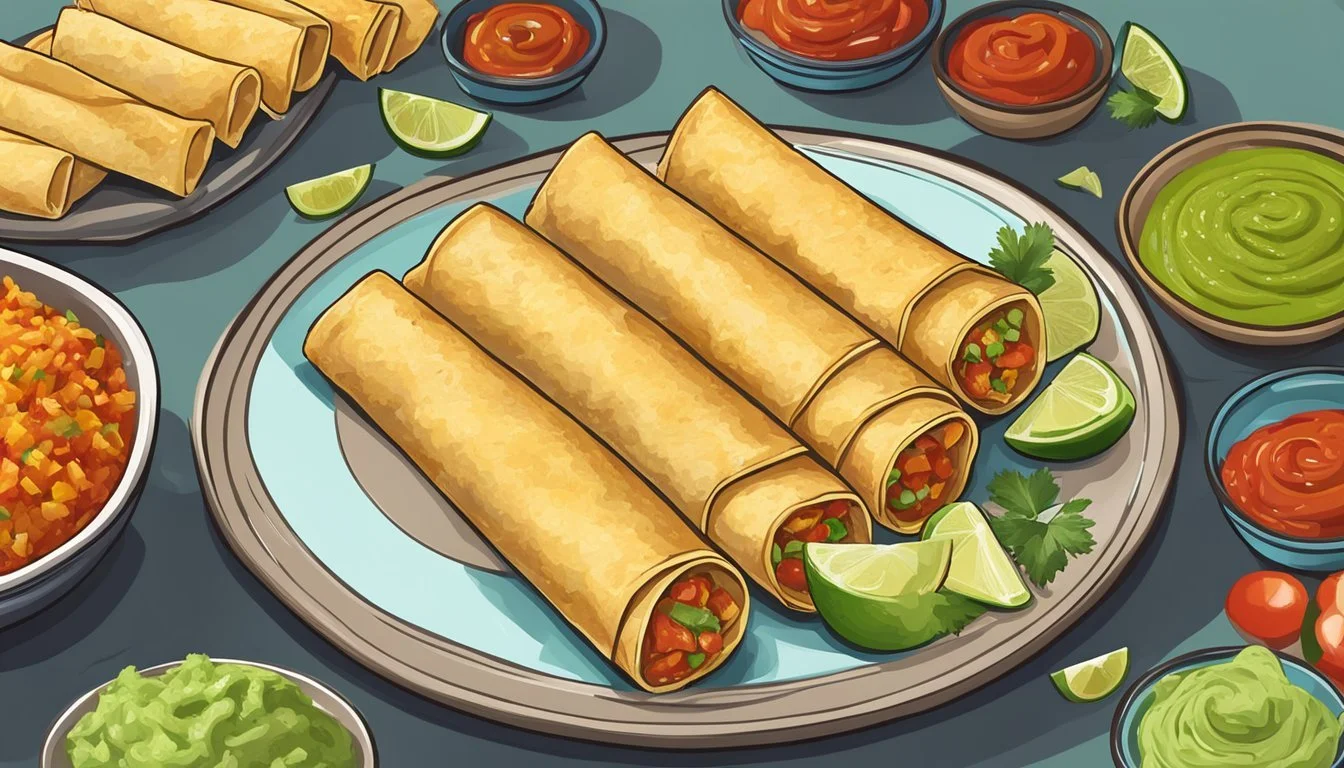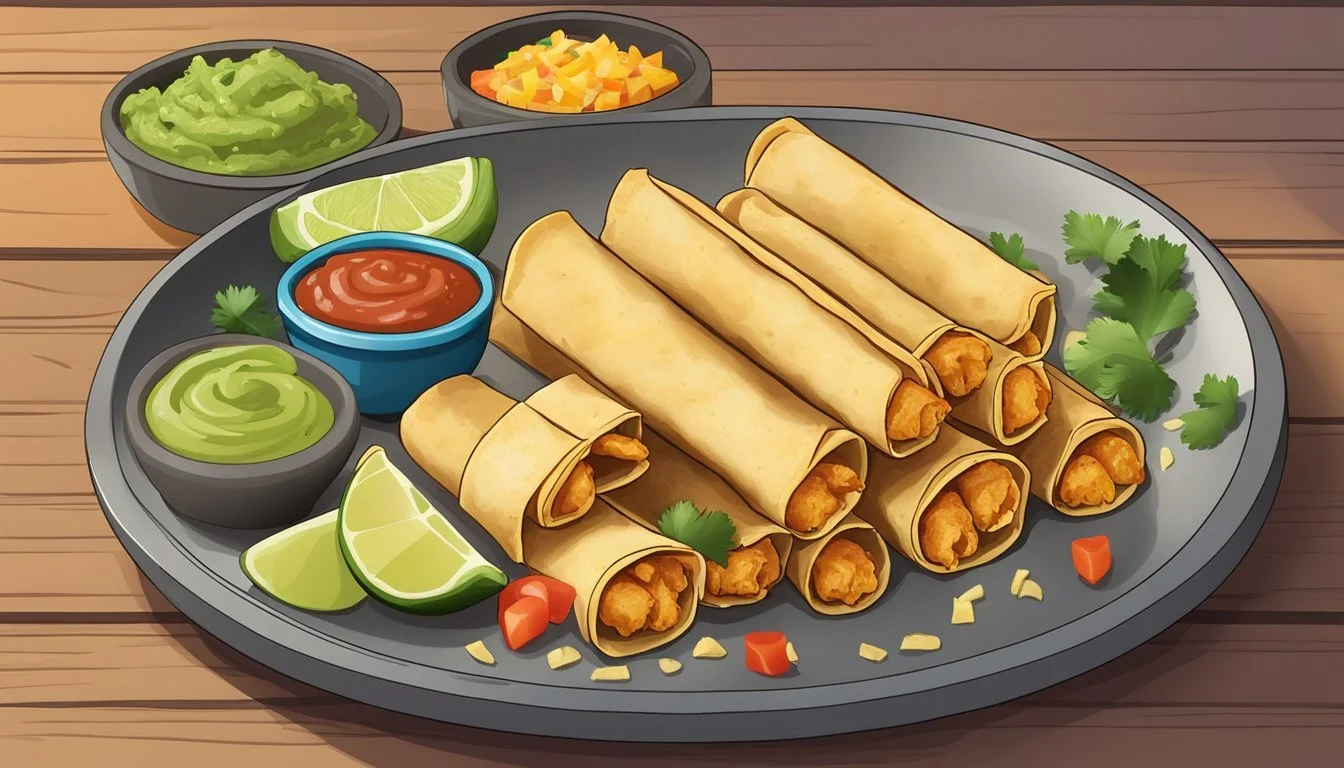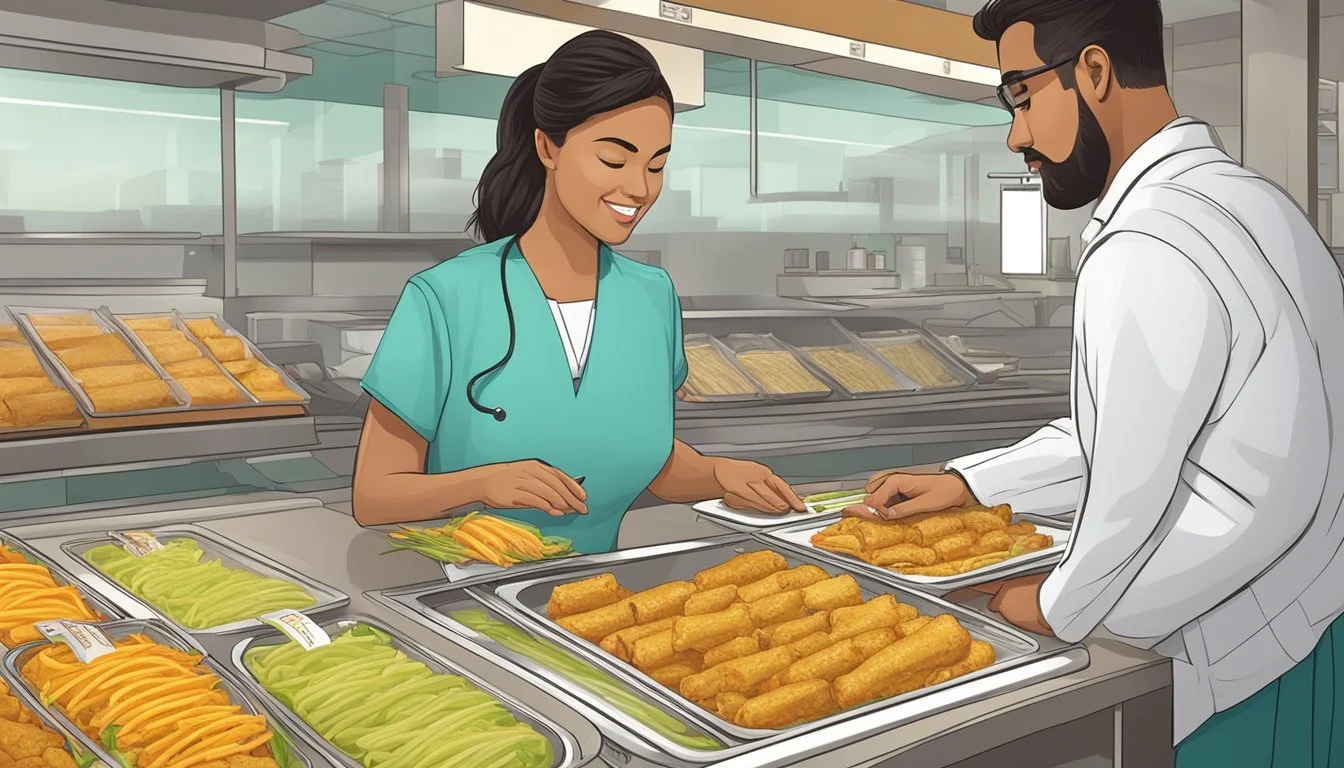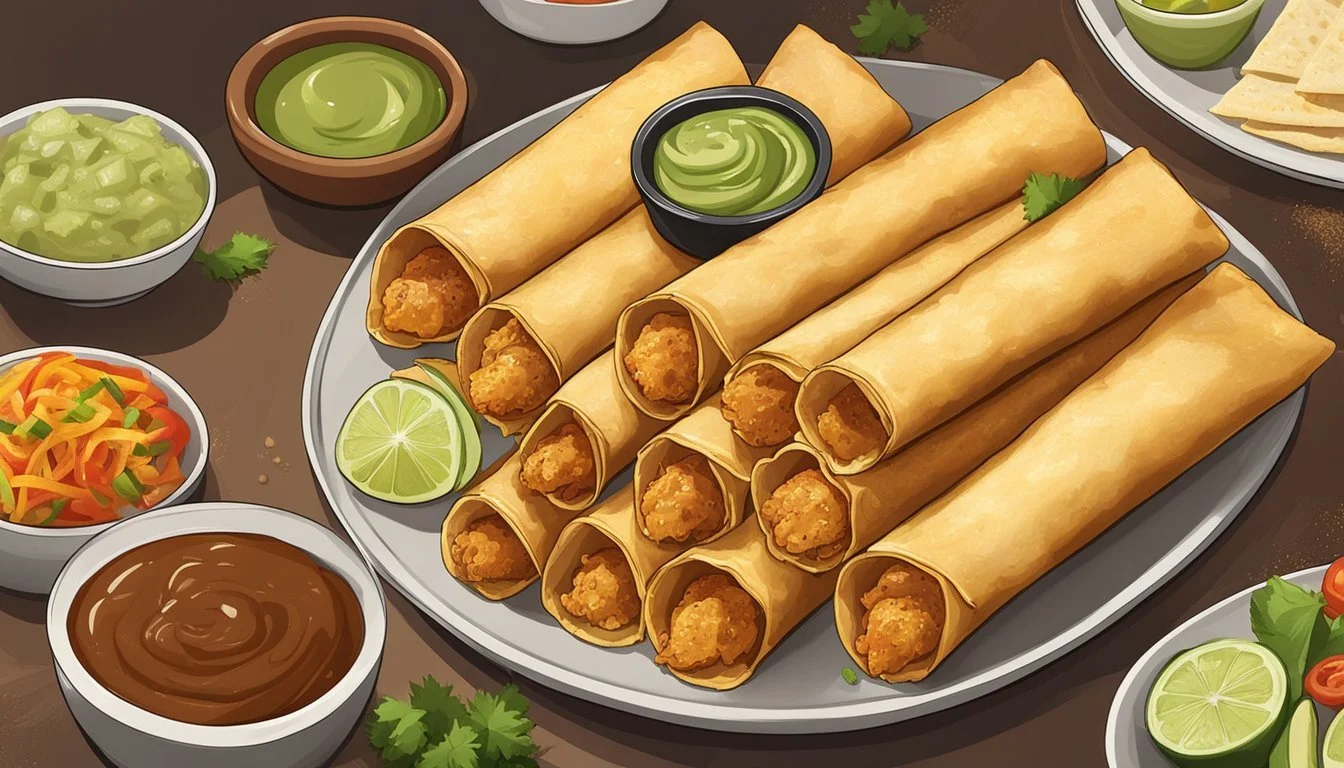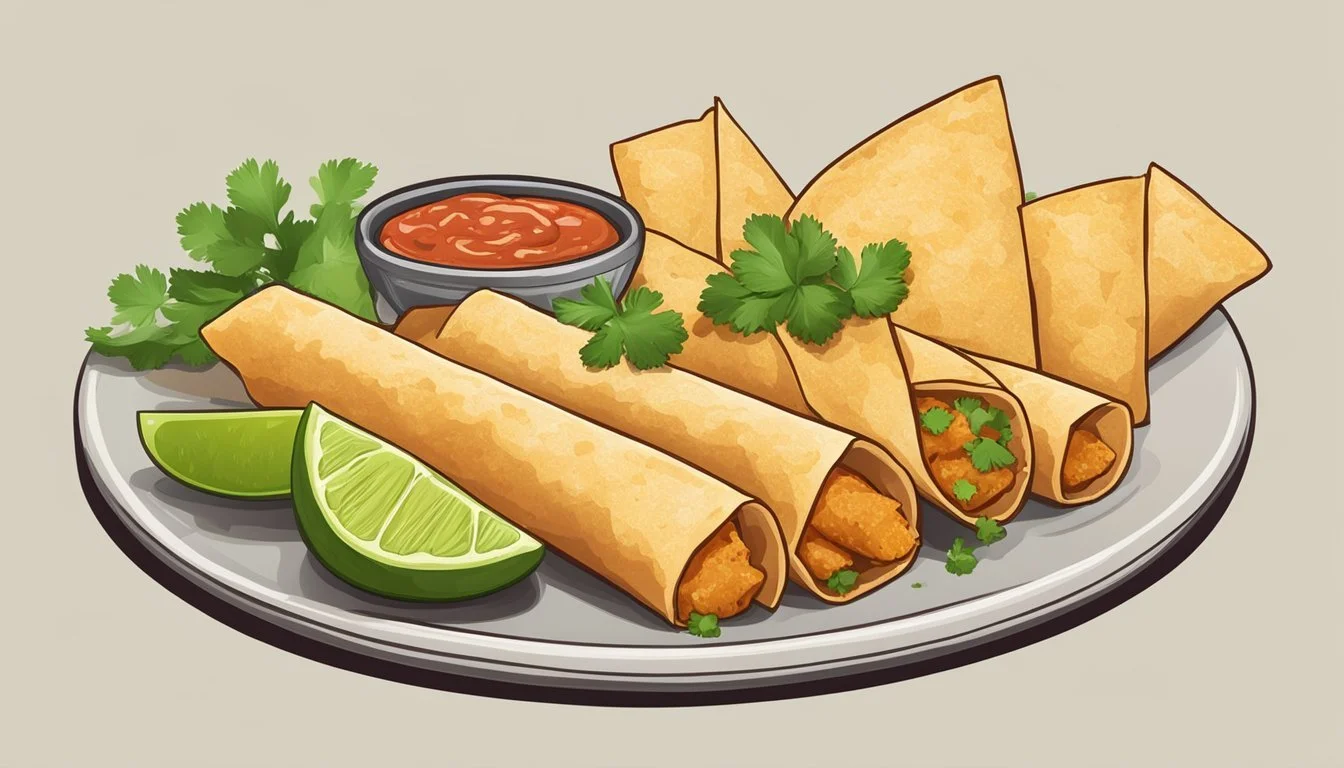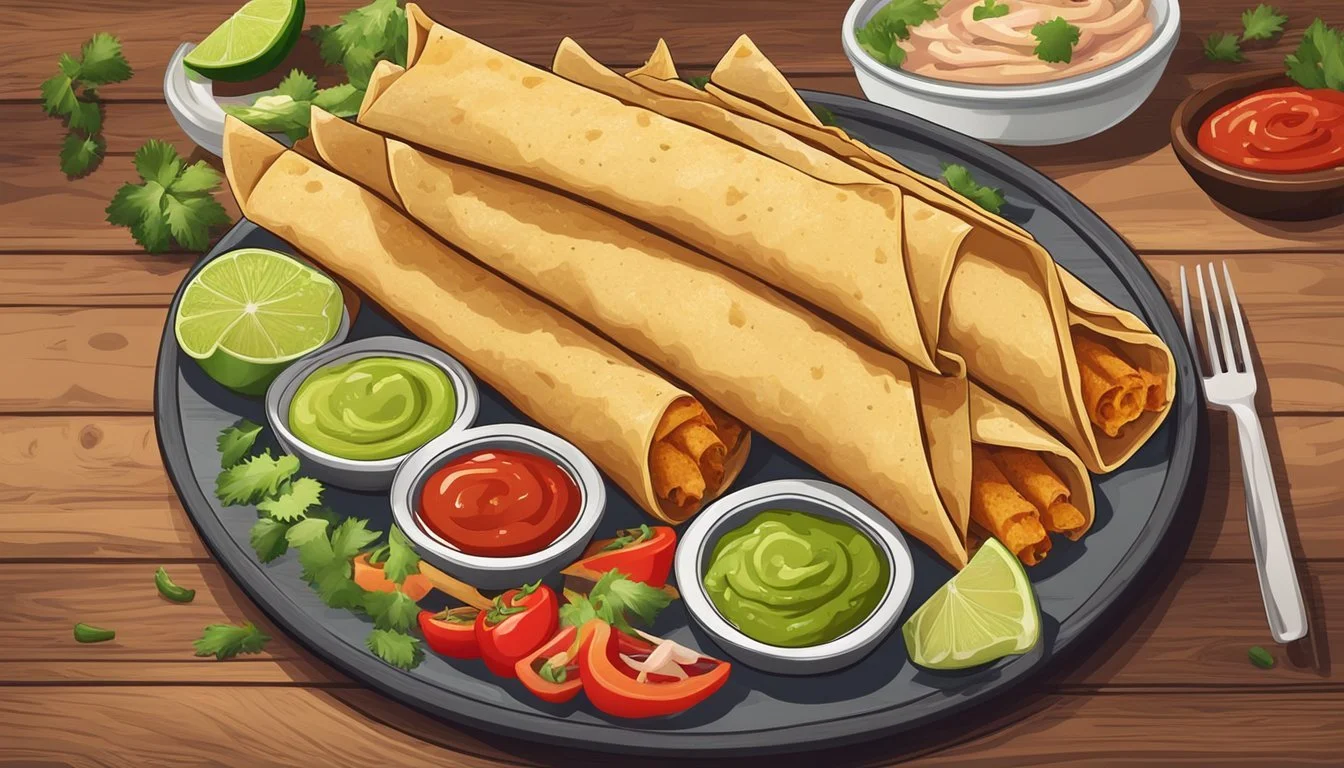How Long Do Chicken Taquitos Last?
Proper Storage and Shelf Life
Chicken taquitos are a versatile dish that can serve as a snack, appetizer, or even a full meal. These crispy, flavorful rolls are loved by many, but how long do they actually last once you've prepared them? Cooked chicken taquitos can last up to 4 days in the refrigerator if properly stored in an airtight container.
For those who prefer to prepare meals in advance, chicken taquitos freeze quite well. When stored in the freezer, these savory treats can last anywhere between 2 to 3 months while still maintaining their delicious taste and texture. Always ensure they are tightly wrapped or placed in freezer-safe containers to prevent freezer burn and preserve their quality.
Knowing how to store chicken taquitos effectively can help you enjoy this delightful dish whenever you wish without worrying about spoilage. This makes them an excellent option for meal prepping or ensuring you always have a tasty snack on hand.
Understanding Taquitos
Taquitos are a popular Mexican dish often enjoyed for their versatility and flavor. This section delves into what taquitos are, the role of their ingredients, and how they compare to flautas.
What Are Taquitos?
Taquitos are small, rolled tortillas filled with various ingredients and then baked or fried. Traditionally, they are made using corn tortillas and filled with shredded meat such as chicken or beef. The fillings can also include cheese, beans, and spices.
A typical filling might include shredded chicken mixed with cheese and seasonings. Once rolled, taquitos are cooked until they are crispy and golden brown. They are often served with toppings like sour cream, guacamole, or salsa.
The Role of Ingredients in Taquitos
Corn tortillas are the traditional choice for taquitos, lending them an authentic flavor and texture. Flour tortillas are sometimes used, providing a slightly different taste and texture but retaining the essential characteristics of taquitos.
The filling is crucial for flavor. Rotisserie chicken is a convenient and flavorful option, making preparation simpler. Cheese like cheddar or Monterey Jack enhances the flavor profile, while spices such as cumin and chili powder add depth.
Beans, corn, and cilantro might also be included for additional textures and flavors. Proper seasoning ensures a balanced taste, and ingredients should be mixed well to create a cohesive filling.
Taquitos vs. Flautas
Both taquitos and flautas involve rolled tortillas with fillings, but there are key differences. Taquitos traditionally use corn tortillas and are smaller in size. They are often baked or fried until crispy.
Flautas, on the other hand, typically use flour tortillas and are usually larger. They are often fried, resulting in a different texture. The choice between taquitos and flautas may come down to personal preference and the desired texture.
While both dishes are similar, the primary distinction lies in the type of tortilla and the cooking method used, each offering a unique eating experience.
Preparation of Chicken Taquitos
When preparing chicken taquitos, having the right ingredients, techniques, and flavors ensures a delicious result. The process involves selecting key ingredients, applying suitable cooking methods, and using the right seasonings.
Key Ingredients and Variations
Chicken taquitos typically include shredded chicken, cheese, and seasonings wrapped in corn tortillas. Common cheese options are Pepper Jack, Monterey Jack, or a mix of shredded cheese.
To diversify flavors, incorporate cream cheese for creaminess, or add green chiles and spices like chili powder and cumin. Vegetables such as onions, garlic, and bell peppers can also be added for texture and taste.
For those preferring alternatives, ground beef or black beans can replace chicken, and flour tortillas may be used instead of corn.
Cooking Techniques
Begin by preheating the oven to between 400°F (200°C) and 425°F (220°C). For baking, place taquitos seam-side down on a baking sheet lined with parchment paper and lightly coated with cooking spray or oil. Bake for about 15-20 minutes, flipping halfway through until crispy and golden brown.
Alternatively, air-frying taquitos involves preheating to 375°F (190°C) and cooking for approximately 10-12 minutes. Frying in a skillet with oil is another method, where taquitos are cooked until golden on all sides.
Seasoning and Flavor Profiles
Effective seasoning includes typical spices such as salt, black pepper, chili powder, ground cumin, garlic powder, and onion powder. These build a robust base flavor for the chicken filling.
Additional flavor enhancers such as oregano and cayenne add depth and heat. Ensure balance by tasting and adjusting salt levels during preparation. Mixing cheese with green chiles contributes to a tangy, spicy profile.
Seasoned chicken retains moisture when properly cooked, giving each taquito a satisfying crunch and savory interior.
How to Make Chicken Taquitos
Chicken taquitos are delicious and versatile, making them a favorite for many. This guide covers the critical steps of assembling the taquitos, choosing the right cooking methods, and serving them with the best accompaniments.
Assembling the Taquitos
To assemble chicken taquitos, start by preparing the filling. Combine shredded cooked chicken with spices such as cumin, chili powder, garlic powder, and salt. Add shredded cheese, such as cheddar or Monterey Jack, and optional ingredients like chopped chiles and a squeeze of lime juice.
Lay out the tortillas, with flour tortillas being a preferable choice for their pliability. Place about 2 tablespoons of the chicken mixture onto each tortilla. Roll each tortilla tightly to ensure it holds together during cooking. Secure with a toothpick if necessary.
Cooking Methods
Chicken taquitos can be cooked using various methods to achieve a crispy and golden brown texture. The most common methods include baking, frying, and air frying.
For baking, preheat the oven to 400°F, place the rolled taquitos on a baking sheet, and bake for 15-20 minutes until crispy. Frying involves heating oil in a deep skillet to 325°F-350°F and frying the taquitos until golden brown, typically 2-3 minutes per side. Air frying provides a healthier alternative, requiring a preheated air fryer set to 375°F for around 10 minutes.
Serving Suggestions
Serving chicken taquitos can be a festive occasion with various toppings and accompaniments. Offer sides like guacamole, salsa, and sour cream for dipping. Fresh pico de gallo, cilantro, and additional lime juice enhance the flavor profile.
For a more robust presentation, arrange the taquitos on a platter and garnish with shredded lettuce, chopped tomatoes, and sliced avocado. Toothpicks can be used to serve individual portions, making it convenient for guests.
These suggestions ensure that the chicken taquitos not only taste delicious but also look appealing on the table.
Storage and Shelf Life
Chicken taquitos can remain safe to eat with proper storage practices. Considerations for refrigeration, freezing, and reheating are essential for maintaining their quality and safety.
Storing Leftovers
Chicken taquitos should be stored in airtight containers or wrapped tightly in aluminum foil or plastic wrap. Place them in the refrigerator within two hours of cooking to prevent bacterial growth.
Refrigerated taquitos can be safely consumed within 3 to 4 days at a temperature of 40°F (4°C) or lower. It's important to label the containers with the date they were stored to keep track of freshness.
Freezing and Thawing
For longer shelf life, taquitos can be frozen. Place taquitos in a single layer on a baking sheet and freeze until solid before transferring them to a freezer-safe container or ziplock bag. Properly stored, frozen taquitos maintain peak quality for up to 6 months.
To thaw, transfer taquitos from the freezer to the refrigerator and let them defrost overnight. For quicker thawing, use the defrost setting on a microwave, ensuring it runs in short intervals to avoid cooking parts of the taquitos.
Reheating Instructions
When ready to eat, taquitos can be reheated straight from the fridge or after thawing. For oven reheating, preheat the oven to 375°F (190°C) and bake for 10-15 minutes, or until heated through and crispy.
Alternatively, use a microwave for faster reheating. Place taquitos on a microwave-safe plate and heat on high for 1-2 minutes, checking periodically to avoid overcooking. For best results, reheat in short intervals to ensure even heating.
Safety and Quality Preservation
Proper storage is essential for ensuring the safety and quality of chicken taquitos. Refrigeration is key for short-term storage. Once cooked, taquitos can be stored in an airtight container for up to four days in the fridge. This helps maintain their flavor and prevents bacterial growth.
For longer storage, freezing is a reliable option. Properly wrapped, chicken taquitos can last up to three months in the freezer. Make sure to use heavy-duty aluminum foil or freezer bags to prevent freezer burn and preserve freshness.
Maintaining a crispy shell when reheating is a common concern. They should be placed in the oven at 350 degrees Fahrenheit until heated through. Avoid microwaving, as it can make them soggy. Using a baking sheet and a light spray of oil can help retain their crispiness.
Quality also depends on the ingredients used in the taquitos. High-quality protein sources like fresh chicken and proper seasoning ensure they remain tasty after storage. Proper initial cooking and handling are crucial to extend their shelf life and keep them safe to eat.
Storage Tips:
Refrigerate: Up to four days
Freeze: Up to three months
Reheat: Oven at 350°F
Keep in airtight containers
Following these guidelines ensures your chicken taquitos remain delicious and safe to eat. Proper storage and handling are critical for maintaining both their safety and quality.
Nutritional Information and Health Considerations
Chicken taquitos can be an enjoyable and flavorful meal, but it is important to be mindful of their nutritional content.
One standard serving of a chicken taquito contains approximately 119 calories. Key nutritional components per serving include:
Nutrient Amount % Daily Value* Total Fat 5.3g 7% Saturated Fat 1g 5% Polyunsaturated Fat 1.8g — Monounsaturated Fat 2g — Protein — — Carbohydrates — —
Protein in chicken taquitos provides essential amino acids, supporting muscle repair and growth, while lean meat like chicken is a healthier option compared to fattier meats.
Homemade taquitos can offer a chance to enhance nutritional value. Incorporating additional vegetables such as bell peppers or spinach can increase fiber and vitamin intake.
Selecting a healthier cooking method like baking instead of frying can help lower total fat content. For a vegetarian variation, substitutes like black beans or tofu can be used to maintain protein levels while catering to different dietary preferences.
When considering overall meal plans, it's beneficial to balance taquitos with side dishes rich in greens to provide a well-rounded, nutritious meal.
Recipe Tips and Tricks
Achieving perfect crispiness, mastering the homemade technique, and exploring flavor variations are essential components for making chicken taquitos an unforgettable dish.
Achieving the Perfect Crispiness
To get taquitos crispy, baking or air frying are both effective methods.
For baked taquitos, preheat the oven to 400°F or 425°F based on your recipe. Place them seam side down on a baking sheet lined with parchment paper, and lightly brush or mist the outsides with cooking oil.
Bake for 15-20 minutes, turning them halfway through until they are golden brown and crispy.
For the air fryer, preheat to 375°F. Lightly spray the taquitos with cooking spray and air fry for 10-12 minutes, flipping once halfway through.
Homemade Taquito Mastery
Cooking time varies depending on the method, but ensuring the filling is prepared correctly is key.
When preparing homemade chicken taquitos, cook onions until tender and mix with seasonings like cumin, garlic powder, and onion powder. Add shredded chicken and cheese, stirring until cheese melts.
Use a small amount of filling per tortilla, rolling tightly and securing with a toothpick if necessary.
Ingredients like cilantro lime rice, Mexican rice, or refried beans can be served alongside for a complete meal.
Flavor Variations and Enhancements
Adding flavor variations can elevate your taquitos. Mix in different spices like smoked paprika or incorporate chopped green chiles for a kick.
Cheese varieties like Monterey Jack or cheddar can alter the taste significantly.
Consider sprinkling some Kosher salt over the taquitos before baking or air frying for added crunch and flavor.
Serving taquitos with sides like cilantro lime rice, Mexican rice, or refried beans can enhance the dining experience.
Experimenting with ingredients and preparation methods allows one to perfect their easy recipe and create a dish that fits personal taste preferences.
Common Mistakes to Avoid
When making chicken taquitos, several common errors can lead to unsatisfactory results. These include overcrowding the baking sheet, using improper freezing techniques, and underseasoning the chicken filling.
Overcrowding the Baking Sheet
Overcrowding the baking sheet can result in unevenly cooked or soggy taquitos. To achieve a crispy texture, space them out in a single layer on the sheet. Air circulation is crucial. Using multiple baking sheets or baking in batches can help.
It's also important to flip the taquitos halfway through the cooking time. Flipping ensures even browning and crunchiness on all sides. If too many taquitos are packed closely together, the steam released has nowhere to escape, making them mushy instead of crunchy.
Improper Freezing Technique
Freezing chicken taquitos incorrectly can affect both texture and taste. Before freezing, place taquitos on a baking sheet in a single layer and freeze until solid. Once frozen, transfer them to airtight containers or freezer bags to prevent freezer burn.
Labeling the containers with the freezing date helps with tracking freshness. When ready to bake, bake straight from frozen at the same temperature, adding a few extra minutes to the baking time. Avoid thawing taquitos before baking, as this can lead to soggy results.
Underseasoning
Underseasoning is a common mistake that leads to bland taquitos. Ensure that the chicken filling is properly seasoned with spices like cumin, chili powder, and garlic powder. Cheese, corn, beans, and salsa can also enhance flavor.
Don't forget to season each component of the filling separately. Tasting the filling before rolling the taquitos is a good practice. Sufficient seasoning brings out the full range of flavors and can make a significant difference in the final product's taste and satisfaction.
Creative Serving Ideas
When preparing chicken taquitos, selecting the right side dishes and toppings can elevate the dining experience. Pairing them with fresh, vibrant sides and complementary dips enhances their flavor and can turn a simple meal into a delightful culinary experience.
Side Dish Recommendations
Rice and Beans: Serve chicken taquitos with a side of Spanish rice and refried beans. The rice adds a fragrant component, while the beans offer a creamy texture that complements the crispy taquitos.
Salad: A crisp, fresh salad with lettuce, tomatoes, and cucumbers adds a refreshing contrast. Use a light vinaigrette dressing to avoid overpowering the flavors of the taquitos.
Corn on the Cob: Grilled corn on the cob, seasoned with butter and a dash of chili powder, is a tasty and visually appealing side dish.
Topping and Dip Options
Guacamole: A generous dollop of guacamole on top of each taquito adds texture and a rich, creamy element.
Sour Cream: Add a spoonful of sour cream to introduce a tangy flavor.
Cheese: Sprinkle grated cheddar or crumbled cotija cheese for added richness.
Lime: Serve with lime wedges for a zesty kick. Squeezing fresh lime juice over taquitos enhances their flavor.
Dips: Offer a variety of dips like salsa, pico de gallo, and creamy queso for dipping or drizzling over the taquitos. These options provide a variety of flavors and textures, making the meal more dynamic.
Alternative Taquito Recipes
There are a variety of creative ways to enjoy taquitos, whether you're looking for vegetarian options, different types of meat, or healthier alternatives. Here are some specific ideas to diversify your taquito repertoire.
Vegetarian and Vegan Options
For those who prefer a meatless option, vegetarian taquitos are a delicious alternative. Black beans, corn, and bell peppers can be mixed with shredded Mexican cheese blend for a savory filling. For vegan versions, substitute cheese with vegan cheese or a cheesy nut-based sauce.
To add texture, incorporate ingredients like shredded lettuce and avocado slices. Another popular option is using mashed sweet potatoes combined with spices and black beans for a rich, flavorful filling. Don't forget to serve with salsa and guacamole.
Meat Variations
For meat lovers, there are different meats to try. Ground beef seasoned with taco spices offers a classic and flavorful option. Chicken Tinga made with shredded chicken simmered in a tomato-chipotle sauce is another savory choice perfect for taquitos.
Using leftover meat is also a practical approach. For instance, leftover pork carnitas or barbacoa beef can be repurposed into taquito fillings. These variations can be complemented with vegetables such as onions, cilantro, and shredded lettuce to enhance the taste.
Healthy Twists on Classic Taquitos
Health-conscious individuals can make lighter taquitos by using whole wheat tortillas or even lettuce wraps instead of traditional tortillas. Fillings made with lean proteins such as ground turkey or chicken breast help reduce fat content.
For added nutrition, include an array of vegetables like spinach, zucchini, and carrots. Baking taquitos instead of frying them is another way to cut down on calories and fat. Pair these healthier taquitos with salsa verde or Greek yogurt for a refreshing dip.
By experimenting with these alternative recipes, taquito lovers can enjoy a variety of flavors while catering to different dietary preferences and nutritional goals.

